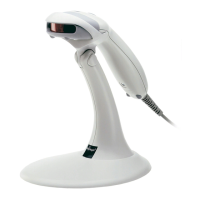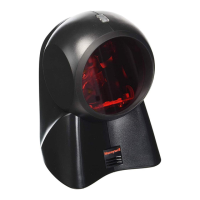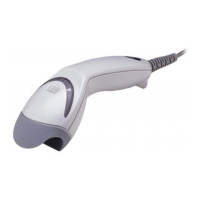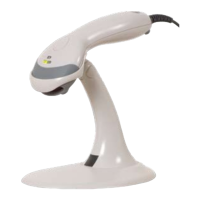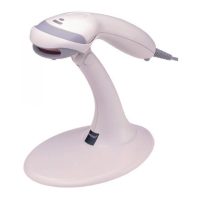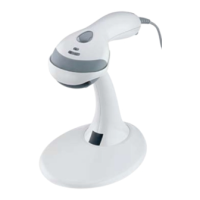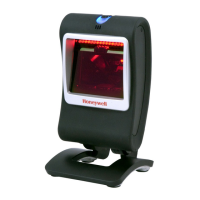11 - 15
Ad Hoc Channel 1 Use this parameter when the Radio Mode profile parameter is set to Ad Hoc.
Specifies the channel to be used for an Ad Hoc connection to another client de-
vice. If a channel is selected that is not supported by the by the radio, the default
value is used.
Options are:
• 1 through 14 (the 2.4GHz channels)
• 36, 40, 44, 48 (the UNII-1 channels)
Aggressive Scan On When set to On and the current connection to an AP weakens, the radio aggres-
sively scans for available APs.
Aggressive scanning works with standard scanning (set through Roam Trigger,
Roam Delta and Roam Period). Aggressive scanning should be set to On unless
there is significant co-channel interference due to overlapping APs on the same
channel.
Options are: On, Off
CCX Features Optimized Use of Cisco Compatible Extensions (CCX) radio management and AP speci-
fied maximum transmit power features.
This parameter cannot be changed.
WMM Off Use of Wi-Fi Multimedia extensions.
Options are: On, Off
Default value cannot be changed.
Auth Server Type 1 Specifies the type of authentication server.
Options are: Type 1 (ACS server) and Type 2 (non-ACS server)
TTLS Inner
Method
Auto-EAP Authentication method used within the secure tunnel created by EAP-TTLS.
Options are: AUTO-EAP (Any available EAP method), MSCHAPV2, MSCHAP,
PAP, CHAP, EAP-MSCHAPV2
PMK Caching Standard Type of Pairwise Master Key (PMK) caching to use when WPA2 is in use. PMK
caching is designed to speed up roaming between APs by allowing the client
and the AP to cache the results of 802.1X authentications, eliminating the need
to communicate with the ACS server. Standard PMK is used when there are no
controllers. The reauthentication information is cached on the original AP. The
client and the AP use the cached information to perform the four-way hand-
shake to exchange keys. Opportunistic PMK (OPMK) is used when there are
controllers. The reauthentication information cached on the controllers. The cli-
ent and the controller behind the AP use the cached information to perform the
four-way handshake to exchange keys.
If the selected PMK caching method is not supported by the network infrastruc-
ture, every roam requires full 802.11X authentication, including interaction with
the ACS server.
If the active profile is using WPA2 CCKM, the global PMK Caching setting is ig-
nored and the client attempts to use CCKM.
Options are: Standard, OPMK
Note: This change does not take effect until after a Suspend/Resume cycle.
WAPI Off Default is Off and dimmed (cannot be changed)
TX Diversity On How to handle antenna diversity when transmitting packets to the Access Point.
Options are: Main only, and On.
RX Diversity On-Start on Main How to handle antenna diversity when receiving packets from the Access Point.
Options are: On-Start on Main and Main only.
Frag Thresh 2346 If the packet size (in bytes) exceeds the specified number of bytes set in the
fragment threshold, the packet is fragmented (sent as several pieces instead of
as one block). Use a low setting in areas where communication is poor or where
there is a great deal of wireless interference.
This parameter cannot be changed.
RTS Thresh 2347 If the packet size exceeds the specified number of bytes set in the Request to
Send (RTS) threshold, an RTS is sent before sending the packet. A low RTS
threshold setting can be useful in areas where many client devices are associ-
ating with the Access Point.
This parameter cannot be changed.
Parameter Default Function
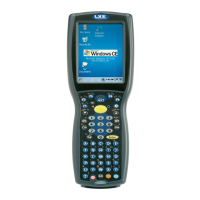
